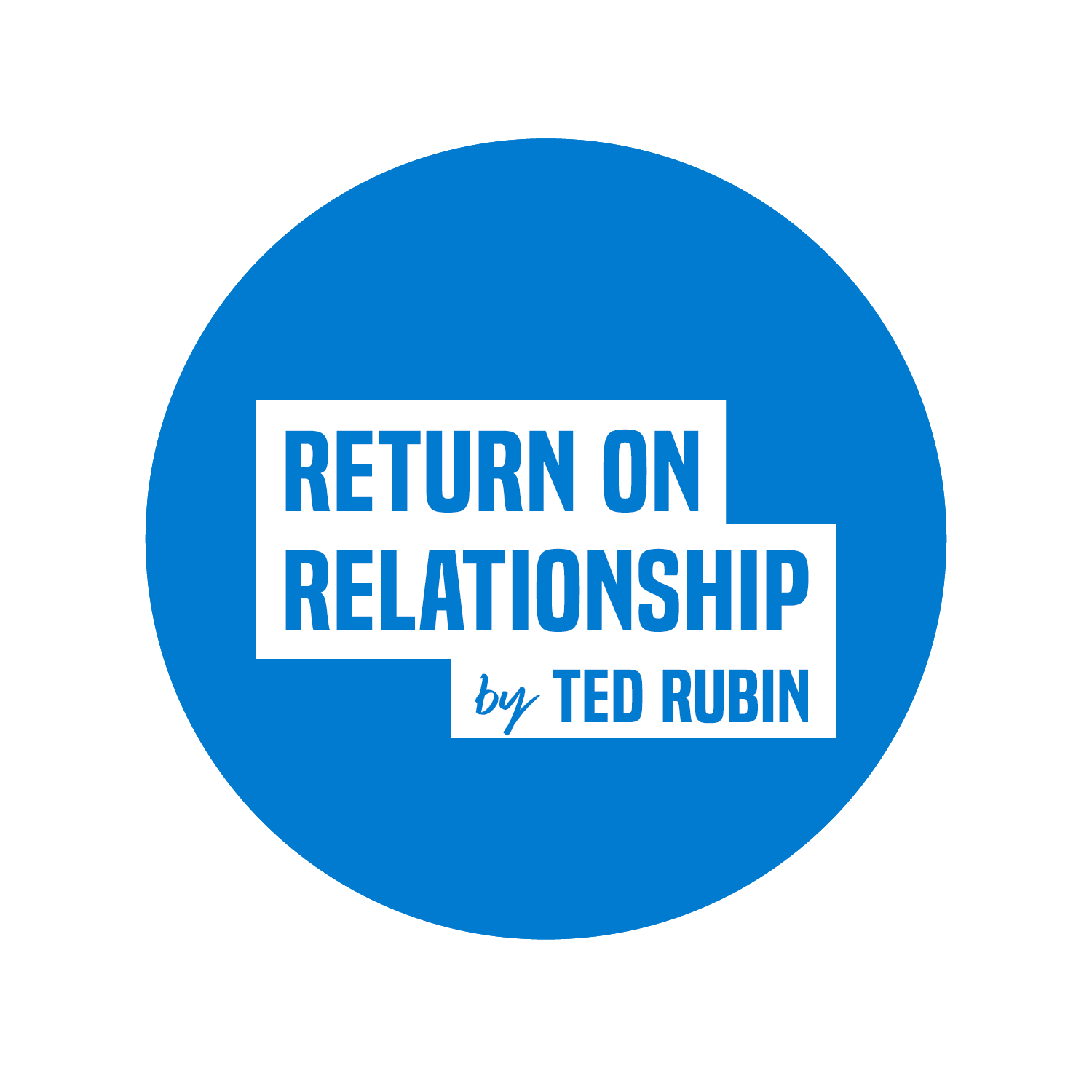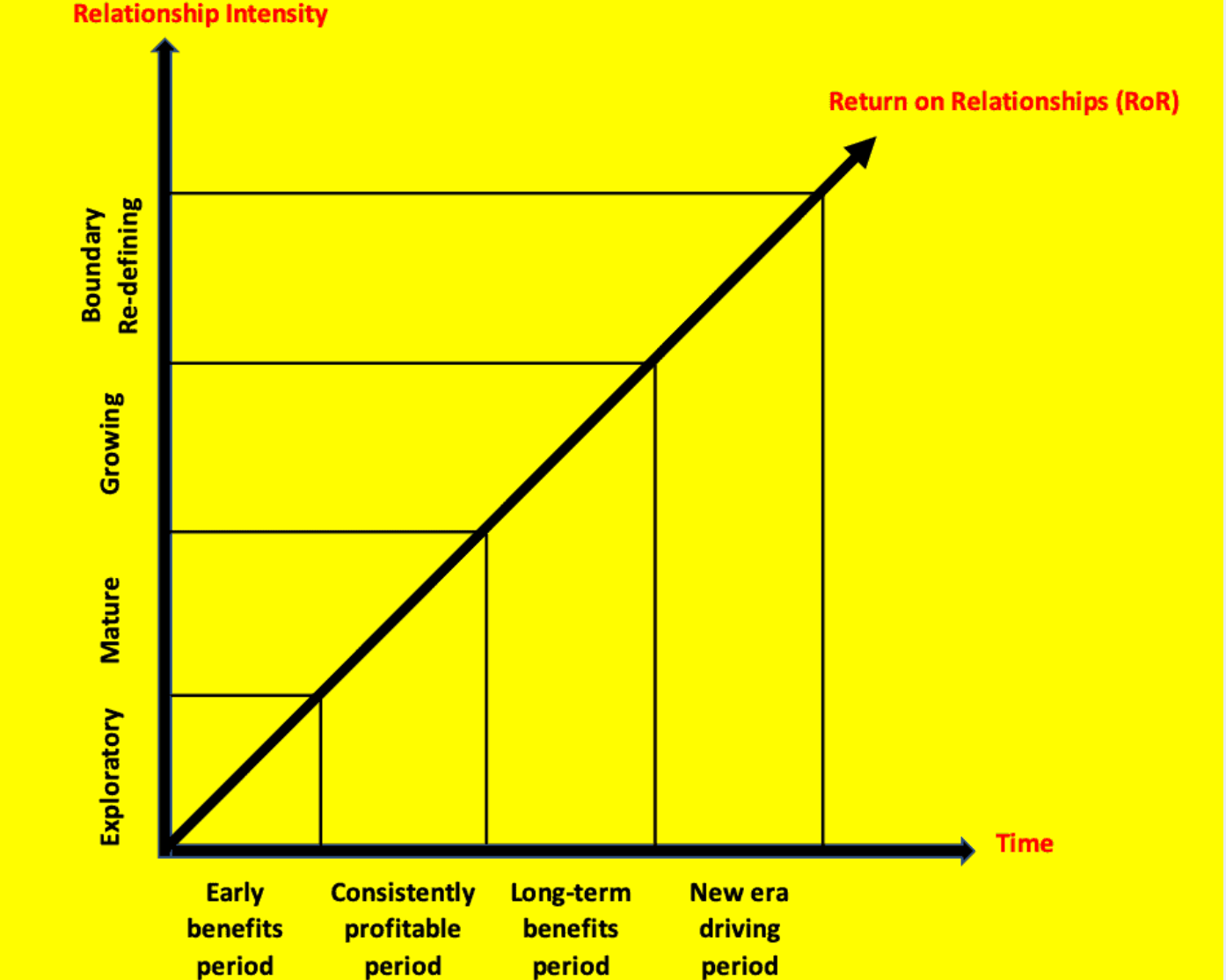Return on Relationships (ROR): What is the formula? ~via @bizmasterglobal
I always appreciate when I come across someone creating and outlining a way to quantify Return on Relationship. Thanks here to Jiwat Ram who does a great job with his formula. /Ted
Networkization of societies has contributed to an exponential increase in the number of relationships, both, face-to-face and virtual. This relationships abundance has made people think about how they can build and maintain value-added relationships? How can they decide the intensity and closeness of relationships? The tendency has led to developments in the concept of Return on Relationships (RoR).
Return on relationships (RoR) is defined as “the value accrued by a person or a brand due to establishment, maintenance and nurturing a relationship” (Gummesson, 2004; https://kalicube.pro/entity/return-on-relationship/). The definition lays the framework for constituent parts of the concept-oriented broadly around value over time and the interactions.
The constituent parts of RoR
While broadly RoR is made up of mainly two components i.e. interaction over time and value, there are a number of elements that embody the spirit of these two components providing a more elaborate structure of RoR. We discuss some of these constituent elements below.
1) Mutual value: The mutual value is central to achieving a high RoR. Mutual value underlines the importance of having reciprocal benefits for parties involved in the relationship (Grönroos & Helle, 2012). However, it is not necessary that mutual value will be equal at all times for parties in the relationship and could decrease and increase over a period of time, but there should always be a sense of its existence.
A basic example could be when a customer purchases a product or service, s/he expects product/service does what it is supposed to do and performs at the advertised level of quality.
On the other hand, the seller of the product/service expects to get the payment or anything else in return as per the terms of the transaction. If this transaction is made in good faith and as per terms of trade, it is likely that the relationship will flourish; customers will do further transactions and in return the seller will continue providing quality products/services, resulting in a high RoR achieved by both parties.
Meaningful nature of interaction: The achieving of RoR is underpinned by the meaningful nature of interaction among the parties involved in the relationship (Gummesson, 2004). A meaningful relationship is one where both parties have a reason to be part of the relationship. However, the nature of the relationship at times could be quite explicit or intense or could be implicit, passive, or unclear. In such circumstances, the outcome of RoR could vary depending on the intensity and effort that goes into the relationship and the level of meaningfulness attached by the parties to the relationship.
Perception of value and time relevance: The perception of value associated with the relationship will determine the realization of RoR (Grönroos & Helle, 2012). The differences in value perception could destabilize the relationship and affect RoR.
Further, RoR will also be affected by time. For one party, relationships could be highly meaningful and valuable at a certain point in time and for the other, it may not be so much. Such a scenario will affect the perception of value and realization of RoR. In hindsight, if the RoR remains low for an extended period of time for one of the parties, then it will have an impact on the longevity and continuity of the relationship.
4) Interpersonal skills: It is argued that relationships are also affected by the interpersonal skills possessed by the parties in the relationships. If the parties do not have interpersonal skills and meaningfully interact, sooner or later the parties will start having lower value perception resulting in lower RoR. Interpersonal skills are not just limited to useful person-to-person relationships, but also involves relationships among businesses and people. The customer experience journey with the business will have a significant effect on the perceived value of RoR, as it will determine the interaction effectiveness between business and people (Witell et al., 2020).
5) Marriage of convenience or the context of events: Sometimes relationships are also formed due to events outside the control of parties involved in the relationship. These ‘marriage of convenience’ type of relationships are also meant to create some level of RoR. If the marriage of convenience provides useful value to parties in the relationships, RoR will be high.
The RoR formula
Given the conceptual constituents of RoR, the formula for RoR takes into account mutual value that the parties involved in the relationship create. Grönroos and Helle, (2012) provide one such formula in the context of a customer and supplier relationship which reads as:
RoRR = ( ( ∆ EEc – ∆ IEc ) – ∆ IEs ) x 100
In the above equation, RoRR = Reciprocal return on relationship
JPG = Joint productivity gain, which is defined as JPG = ( ( ∆ EEc – ∆ IEc ) – ∆ IEs )
( ∆ EEc – ∆ IEc ) = is the change in customer’s value-in-use.
∆ EEc = (Customer revenue Proposed – Customer revenue Current).
∆ IEc = (Customer costs Proposed – Customer costs Current).
∆ IEs = (Supplier costs Proposed — Supplier costs Current).
∆Cc = Cost of customer’s relational investment
∆Cs = Cost of supplier’s relational investment
Simply put the RoR formula looks into how value is changed from current to a proposed state once parties come into the relationship. It also takes into account relational investment by both customers and suppliers (Grönroos & Helle, 2012). The above RoR formula seems to provide a basic framework to extrapolate it to other contexts that may vary from a customer-supplier context.
And beyond: The conceptual progress
Having reviewed the foundation and measure of RoR concept, it is imperative to examine the correspondence between relationship intensity (triggered by interactions) and time to see how these two dimensions contribute towards RoR and what other things emerge from this correspondence. As such, we have proposed a two-dimensional conceptual diagram that encapsulates the progress of RoR over time. The conceptual diagram draws upon the explanation of elements and triggers of RoR as explained in some of the earlier studies (e.g. Grönroos & Helle, 2012; Gummesson, 2004; Witell et al., 2020).
We argue that the relationship intensity progresses in four stages over time as shown in the diagram below. It is important to note that the Time dimension signifies accrued time, which means leap from one stage to the next stage is based on accrued interactions at the past stages.
Conclusion:
The expanded use of social media and other digital technologies have necessitated re-conceptualization and redefining the concept of the value of relationship. In this regard, RoR is a useful concept that captures the joint gains realized by parties in a relationship. Just like a return on investment concept, RoR is also measurable by formula (Grönroos & Helle, 2012). While providing an overview of the concept and its measures, we have extended the concept by proposing a new conceptual model of RoR which encapsulates the increase in RoR due to interaction or relationship intensity over time. Needless to mention that the proposed conceptual diagram can be further extended and tested by collecting some empirical data.
References
Grönroos, C., & Helle, P. (2012). Return on relationships: conceptual understanding and measurement of mutual gains from relational business engagements. Journal of Business & Industrial Marketing.
Gummesson, E. (2004). Return on relationships (ROR): the value of relationship marketing and CRM in business-to-business contexts. Journal of business & industrial marketing.
Witell, L., Kowalkowski, C., Perks, H., Raddats, C., Schwabe, M., Benedettini, O., & Burton, J. (2020). Characterizing customer experience management in business markets. Journal of Business Research, 116, 420-430.




